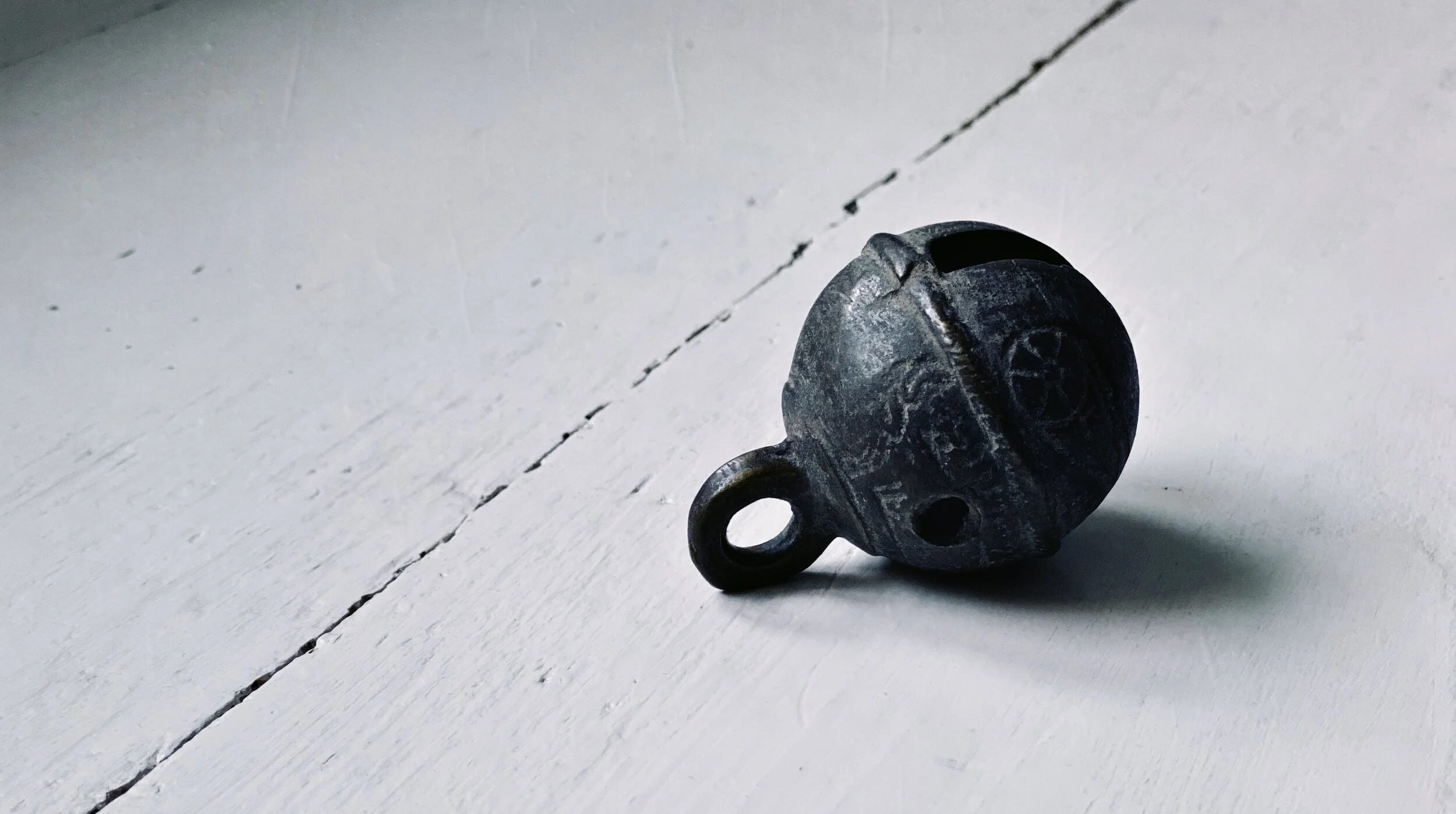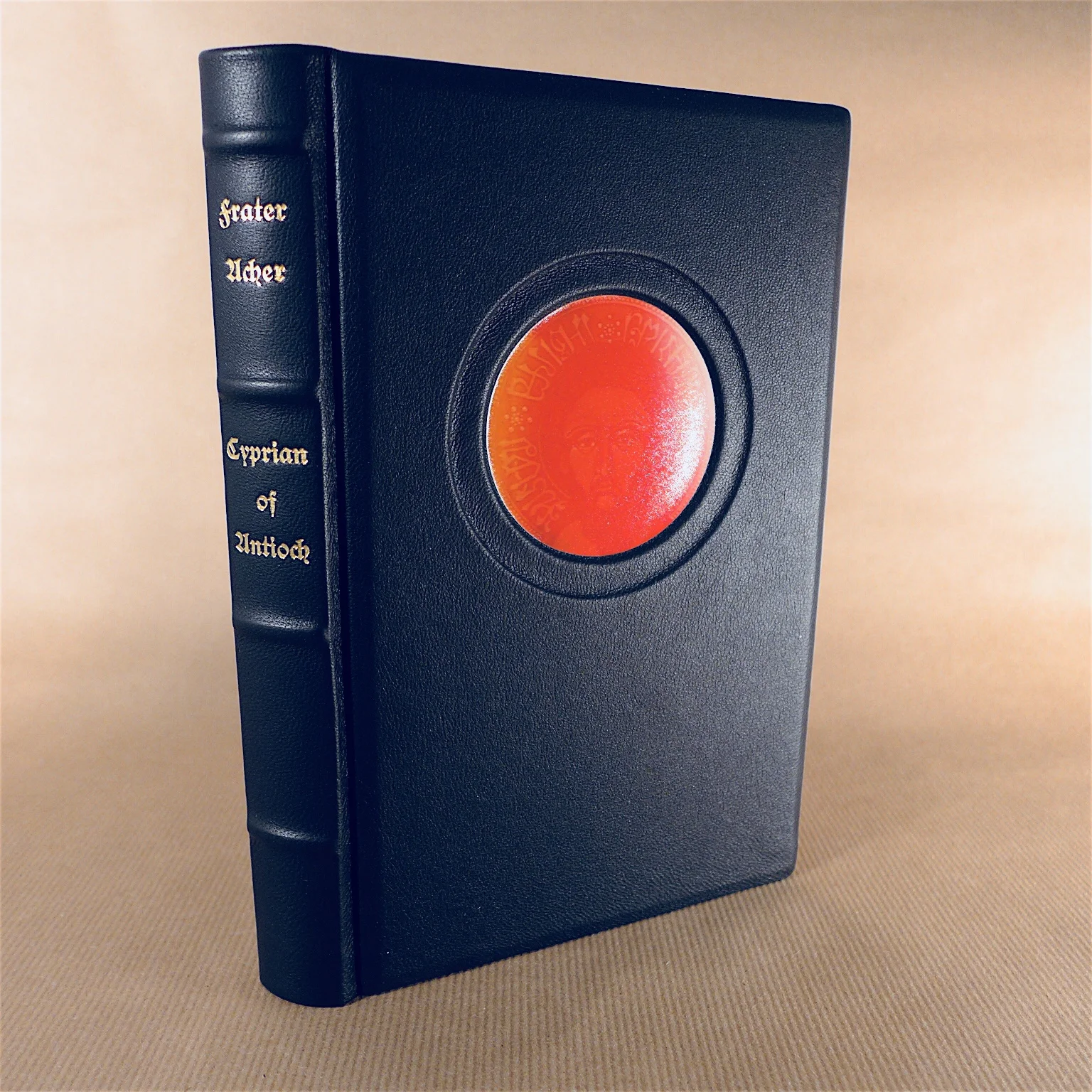The heart is the medicine, the real-world Mohlomi wisely said. Two hundred years after his death, through Mignola’s inspired vision, this medicine took on the form of a small liturgic bell, passed on from beyond death by an ancestral spirit to an antihero from hell. Even more than a tool of protection, Mohlomi’s bell is a tool that offers restoration of the heart.
Read MoreThe following short text is an excerpt from an upcoming book. It forms the introduction to a chapter on conjuring celestial spirits with nothing but the sound of your voice and a magical bell. The deceptive simplicity of the operation can make us fail to realise the complexity that underpins it. Often the simplest of rituals take the highest of skills to accomplish.
Read MoreIt's been four full years of ritual magic abstinence for me. Now this time is coming to an end. Next week, I'll be consecrating my new temple, and then slowly from there begin to engage with it. Based upon almost 20 years of experience as working as a lone-ritual-practitioner, here is the advise I’d give myself.
Read MoreToday the Holy Daimon Online Project is opening its doors for curious visitors, avid readers and engaged practitioners. Over the last ten months, with the help of several amazing people, some wonderful institutions and no insignificant private funding, we have worked hard to offer you completely free access to the current stock of material.
Read MoreYesterday Scarlet Imprint announced my forthcoming book with them, Holy Daimon. I thought that was worthwhile sharing a little bit of related background and news.
Read MoreIn an exclusive partnership with the wonderful Marissa Newell of 'Veil of Earth' we are proud to present an original, new magical artefact - combining an excerpt of the 4th century 'Oratio Cypriana' with Mrs.Newell exceptional skills in traditional pottery.
Read MoreEach book of the Deluxe Edition is entirely hand bound, in full fine leather on order. The stunning highlight of this unique binding comes in its three-levelled relief frontispiece, featuring an igneous Cyprian of Antioch icon.
Read MoreThis September the University of Leipzig is making a bold move: Over three full days, from September 14th to 16th the department has organised the first cross-epochs academic conference on the Grimoire tradition: 'Books of Magic – Words of Magic – Cultures of Magical Knowledge from Antiquity to Modern Times'.
Read MoreJoin me on a virtual exhibition tour and discover the curious artefacts of European folk-magic: skulls to swear by, relics to be mixed with your food, and crowns to be worn by the corpse. Upon closer examination we'll find many surviving ties between the pragmatic folk-rites of our ancestors and the old Grimoire tradition of the West.
Read MoreA formula is meant to provide orientation. This formula is looking at the necessary foundations for any magic to achieve proper results. You might not need it if you are well orientated already. I still learn a lot from understanding and applying it in my own practice.
Read MoreIn a not at all metaphorical sense JSK’s final double volume is an expedition into the ancestral blood-ties of this famous sorcerer-saint. To embark on it is to encounter Cyprian the Mage. Not only as the hero of an ancient polemic against the last surviving pagans, but more importantly as a still present inner contact, a powerful spirit in its own right.
Read MoreEveryone of us is forced to learn how to live life before we die. What as a toddler seems like constant play and discovery over the years turns into a raw and essential struggle. A struggle for one's own place in this maddening world. A struggle for a clear image in that mirror of knowing who we have become. A struggle of balancing what we want for ourselves with what we want to be remembered for by others. The difference for magical adepts lies in a simple choice. It lies in the choice that on top of learning how to live life they also choose to learn how to die before dying.
Read More(...) Now, to make this project happen everyone's contribution is required. Whether you want to help through pre-ordering your copy now or instead through a crowdfunding donation - every little helps! This project has been carried for years by very few people, they have brought it a huge way - and so close to its realisation. I truly hope in the next 21 days we can bring it over the finishing line jointly.
Read More(...) Magical paraphernalia are like four-dimensional recordings of a ritual event. Think of a sacred space filled with a handful of such implements - and now switch positions and look through the eyes of the spirits: Can you see how incredibly busy and noisy this place is? Because from the spirit’s viewpoint these implements, these material tools of spiritual recordings, are in constant playback mode. Without ever stopping they express the rhythms, utterances, forces and living beings recorded into them.
Read MoreLooking from the outside in one could come to the conclusion that by the late 15th century ritual magic had degraded into a mummified, fractured and fallen version of a once golden antique past. Sigils, circles, recipes and barbaric names were copied from manuscript to manuscript and seemed to lose more and more of their original and integral meaning each time a scribe put their hand to them. Ultimately the genre was perceived to degenerate to a cryptic extravaganza, a marginal phenomenon within a dark and largely unchartered ecclesiastic subculture. (...)
Read More(...) Most importantly, however, we can now see the lay of the magical land towards the end of the Middle Ages: By no means was the ‘renaissance of magic’ a rebirth of magic, i.e. the revival of a tradition interrupted since classical times and only preserved in Greek or Arabic source texts. The magical tradition towards the end of the 15th century was well and alive. Yet, its blood pulsed through veins hidden from the public eye.
Read More(...) Magic as such didn't hold its own category but rather presented a particular view of the world - including a broad array of spiritual practices that could be applied to any subject. Thus treatises on e.g. precious stones could be written from a magical point of view as could be treatises on certain diseases, agricultural rhythms or even astrology itself. Broadly speaking, magic was not a matter of subject but of perspective. It was precisely this fluid nature that made it incredible hard to confine for medieval authorities - and still makes it incredible hard to track down for modern day researchers. A treatise providing instructions on certain 'magical practices' could be bound into literally any sort of codex.
Read More(...) In short, we have to let go of our own inner compass of judgement, of the things we like to take for granted, when trying to understand the lives and motives of our forefathers several hundreds years ago. Just as people looked and smelled differently, so they also felt differently, thought differently and appreciated things in very different ways from us today. Modern day gut feel thus is a terribly bad tour-guide to explore our ancestors' actual living realities.
Read More(...) At the turn of the 16th century Agrippa of Nettesheim was a young man of fourteen about to immerse himself into a life weathered by more storms than many of us could imagine today. For decades already these storms had been gathering forces over the continent. Now they were about to unfold on what we have come to know as Europe today, overthrowing and changing the very foundations of society as people had known it and never questioned it for centuries....
Read MoreIt's been several years now that I have been researching on the history of magic in the German speaking countries. It all began with the simple question of how our tradition of Western Magic looked before the time of the GD - especially in Germany, a country where much of their work was published only much later and which was once home to the Rosicrucians movement. The in-depth study On the Order of the Asiatic Brethren which I shared in five parts in mid-2014 was a first result of this research. It focusses an often overlooked strand of our tradition in the 18th century (...)
Read More












